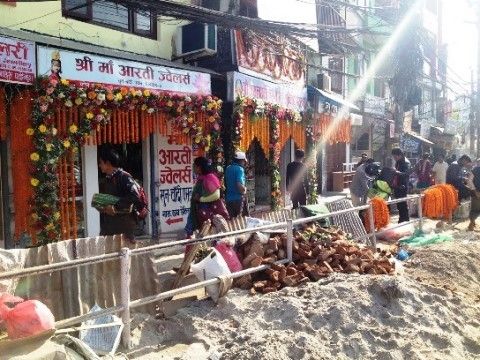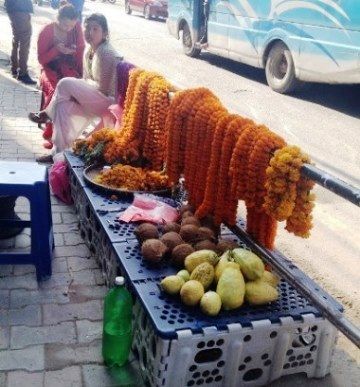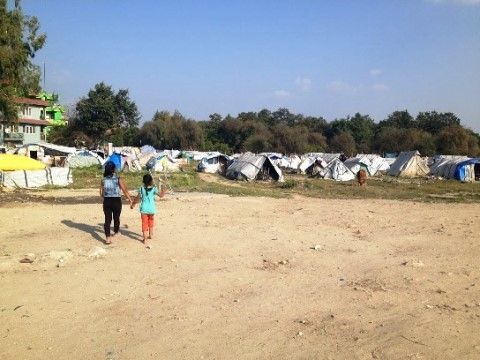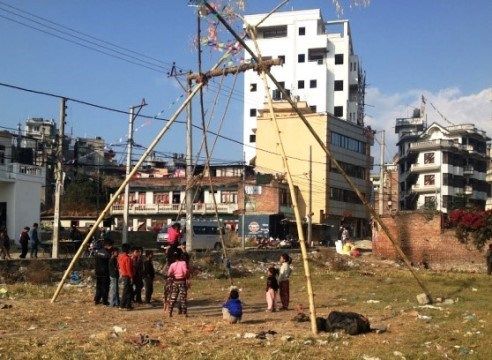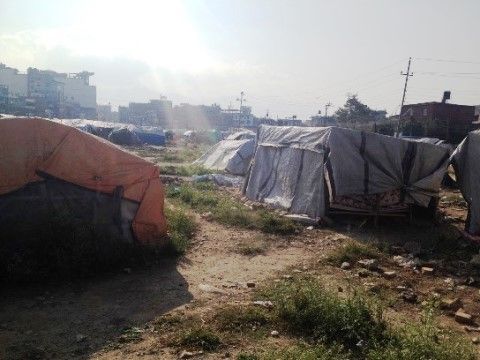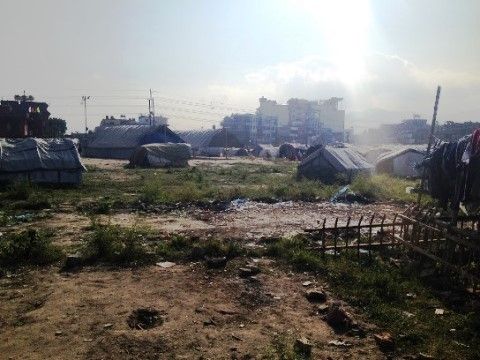
尼泊爾的節慶Tihar,也稱為Dipawali,Bhai Tika,Laxmi Puja,或是燈節festival of lights。萬燈節連續慶祝五天(11/9~11/13),敬拜不同的動物例如烏鴉,狗,母牛,也敬拜印度幸運/財富女神Laxmi。兄弟姊妹們採購禮物(糖果,堅果,水果,麵包等),放風箏,烹煮美食,裝飾家裡和街道,跟朋友玩紙牌,休息放鬆。
節慶結束時為彼此在前額點蒂卡,所以第五天又稱為蒂卡日,或是兄弟蒂卡日Bhai Tika Day。簡言之,萬燈節就是姊妹為自己的兄弟祝福長壽的節日。
About Tihar: The Nepali festival Tihar is also known by many names such as Dipawali or Bhai Tika or Laxmi Puja or as a festival of lights.
It is a five-days festival, which comes soon after the Dashain Festival, and Tihar is all about worshiping of different animals such as crow, dog, cow, and worshiping of the Hindu Goddess of Fortune or Wealth (Goddess Laxmi), and cooking great meals at home, brothers and sisters shopping for gifts, flying kites, decorating homes and streets, playing cards with friends, resting and relaxing, and finally ending the festival with an exchange of a special temporary mark on forehead (tika in Nepali). The last day of the festival is known as Tika day or popularly known as Bhai Tika day (Bhai in Nepali means Brother). To sum up Tihar festival, Tihar is the festival when sisters wish a long life to their brothers (Bhai)!
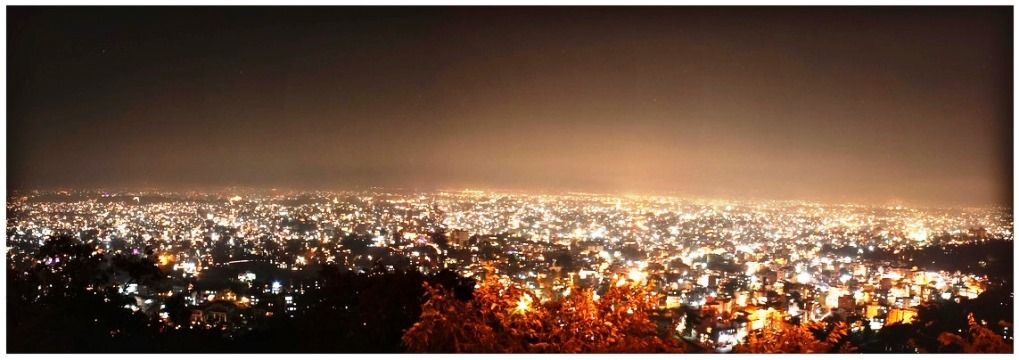
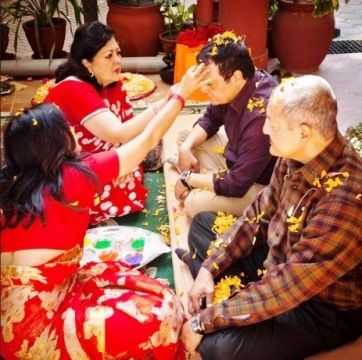
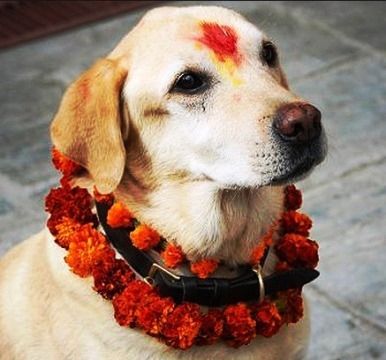
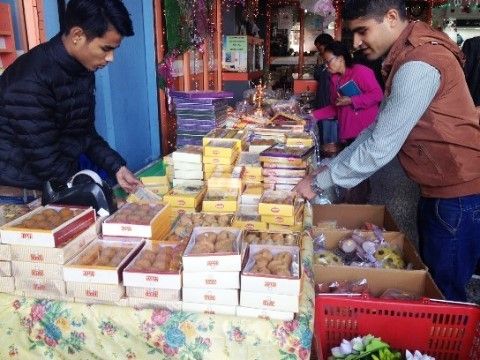
萬燈節的第三天是節慶裡最重要的一天,尼泊爾全國上下敬拜財富女神Laxmi,裝飾家戶,點亮蠟燭或油燈,整個國家變成明亮的燈飾。女神Laxmi的照片或是圖像被放置在祈禱室,起居室或是敬拜室。敬拜儀式使用花朵,線香,油燈,色粉,鈴與錢(紙鈔和硬幣)。黃昏時,家中的女性開始敬拜儀式,用紅色的泥巴在地上畫一個象徵進門的腳印,標示通往敬拜室。
Tihar and Laxmi Puja (3rd Tihar Day) – One of the most important day of the festival is Laxmi Puja on which day the Goddess of wealth (Laxmi) is worshiped in every household in the entire Nepali Kingdom by means of Puja, decoration, candle lights, and oil lamps. In this 3rd day of the Tihar Festival, the entire nation becomes an illumination of lights. Pictures and icons of Laxmi Devi (Goddess) are placed and worshiped in a Puja room (or a place in a living room or a dedicated room for worshiping Gods) Puja is performed using flowers, incense, oil lamps, color-powders, bell and money (both notes and coins). Laxmi puja is performed at dusk using red mud, and puja is often done by a female in the family. She uses her hand covered with red mud to make a symbolic foot-print on the floor entering the home and makes a trail leading to the Puja room.
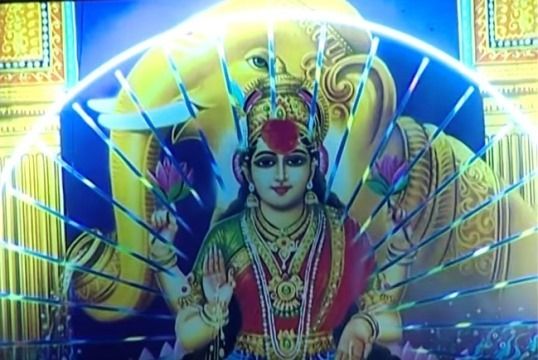
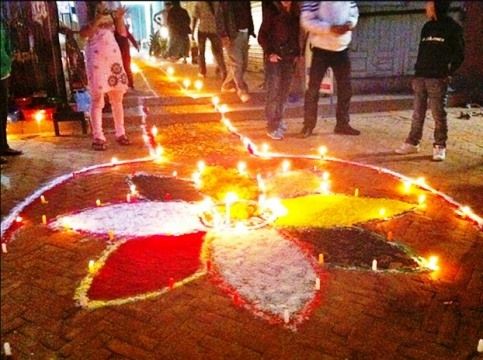
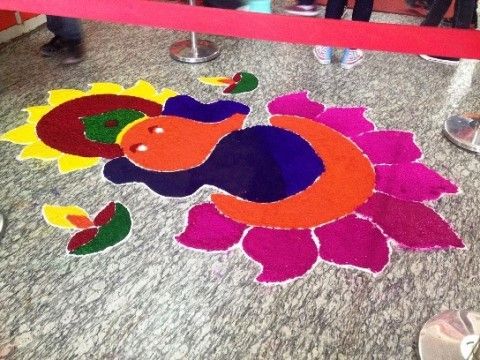
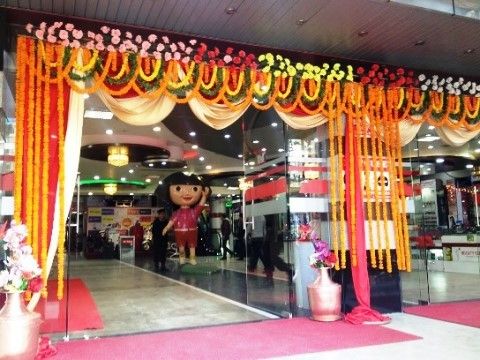
敬拜財富女神的夜晚不只是燈光壯麗,特殊的歌謠(Bhailo or Bhailini)也將這一夜唱響。成群女孩沿戶唱著Bhailo為家戶祈福,換得錢或是各家自製的餐點款待。
“Tihar and Songs : Bhailini Songs (3rd Day) : The eve of Laxmi Puja Day is made spectacular not only by lights but also by echoes of a special song known as Bhailo or Bhailini that’s played only on this day in the entire year!
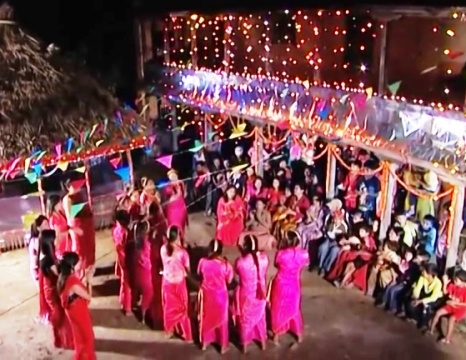
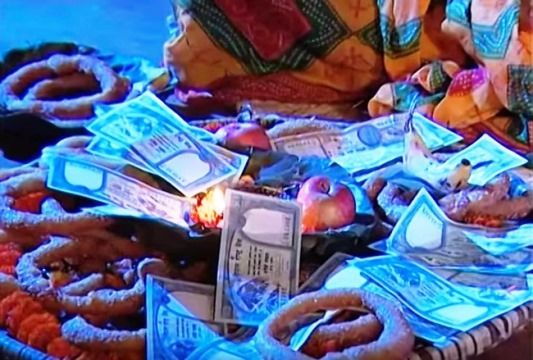
萬燈節第五天又稱為兄弟蒂卡日,姊妹在自己兄弟的前額點上蒂卡(彩色的粉),在脖子掛上花圈,祝福兄弟們長壽幸運。兄弟坐在地上,由姊妹進行祈福式。先把香蕉葉切成細長型,姊妹用手拿著,放在兄弟額頭,然後塗上蒂卡粉底(用米磨成的糊),再把七種顏色用手指輕擦在粉底上面。有些則是用小棒子或小刷子,不用香蕉葉。小棒子沾上蒂卡粉底,在額頭上下刷,然後換一根小棒子在粉底塗上七種顏色。點完蒂卡,把花圈掛在兄弟的脖子上。
Tihar and Tika (5th and Final Tihar Day / Bhai Tika Day) : On the final day also known as Bhai Tika Day, sisters give tika (a colored powder placed on one’s forehead), and mala (a necklace of flowers or also known as flower leis, similar to that’s used elsewhere like in Hawaii!) to brothers along with wishes for long life and prosperity. Brothers sit on a floor while sisters perform their puja. Tika starts with placing a banana leave already cut into a line shape placed on brothers forehead held by one of the sisters hand, then applying tika base (made from rice paste) in the open space. Then sister dabs seven colors on top of the base using her fingers. Some may give tika with the help of a small stick or a brush without the using banana leaves. In this case, small stick is dipped into the tika base, then brushed vertically on the forehead, and then using a different stick, the seven colors are applied on top of the base. After tika, flower garland is put around brother’s neck.
兄弟也用同樣方式為自己的姊妹點蒂卡。姊妹給兄弟Sagun(水果乾,堅果和糖果),兄弟回贈衣服或是錢給姊妹,然後是萬燈節大餐時間。
Then brothers give tika to sisters in the same fashion. Sisters also receive flower garland around their neck. Brothers give gifts such as clothes or money to sisters while sisters give a special gift known as Sagun (which is made of dried fruits and nuts, and candies), and a fantastic Tihar feast takes place.
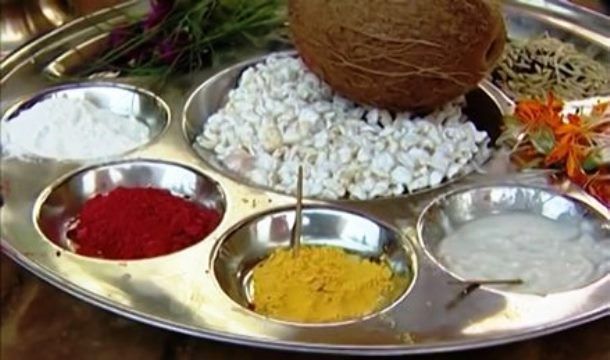
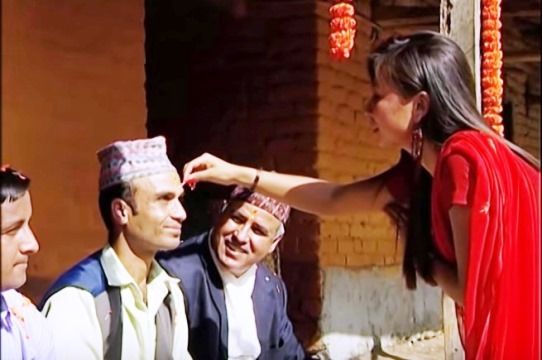
姊妹為家裡兄弟準備特殊的尼泊爾餐,包含有名的尼泊爾麵包,稱為Nepali Roti或Nepali Sel Roti。米磨成細粉加上糖和水,油炸的時候用手或是漏斗將麵糊放入熱油,炸成圓圈狀。這種油炸食物以酥脆口感出名,在尼泊爾的任何節日都是宴客首選。
Tihar and Cooking – Sisters prepare unique Nepali meal at home for brothers. This includes making of the famous Nepali bread known as Nepali Roti or Sel or Sel Roti (as two words together). It’s made by deep frying a mixture of fine rice flour, sugar, and water. The mixture is placed in the frying oil in circle by hand or by the help of a funnel. Nepali Sel Roti is popular for its crispy and crunchy taste, and is the number one treat in any festivals in Nepal.
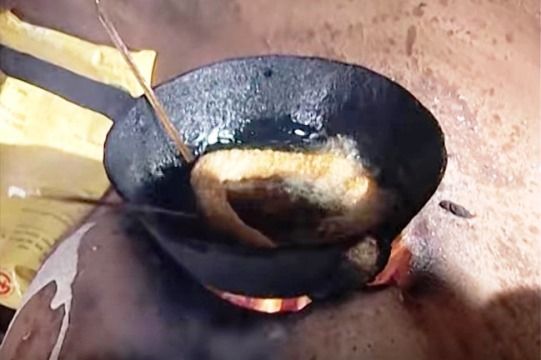
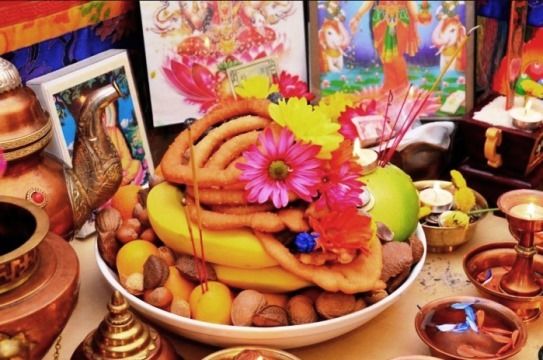
今年因為地震加上尼泊爾政府的限油政策,汽油的黑市價格從每公升106盧比(約35台幣)漲到500盧比(約167台幣)。不但價格高昂,為了要買汽油還得漏夜排隊,排12個小時還不一定能買到。慶祝萬燈節的氣氛淡了許多,點不起油燈,改為用花朵裝飾,晚上不敢外出,因為遇到唱Bhailo祈福的女孩子們,沒辦法回贈禮物。
